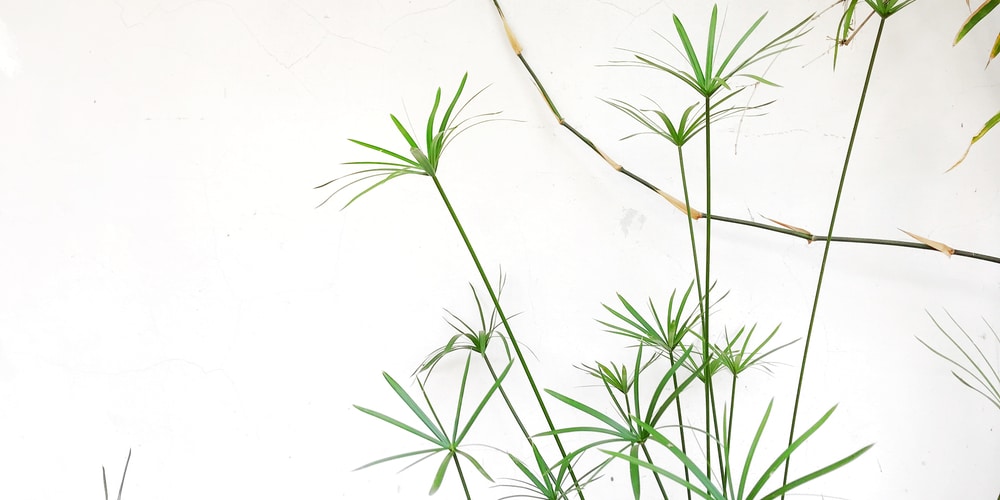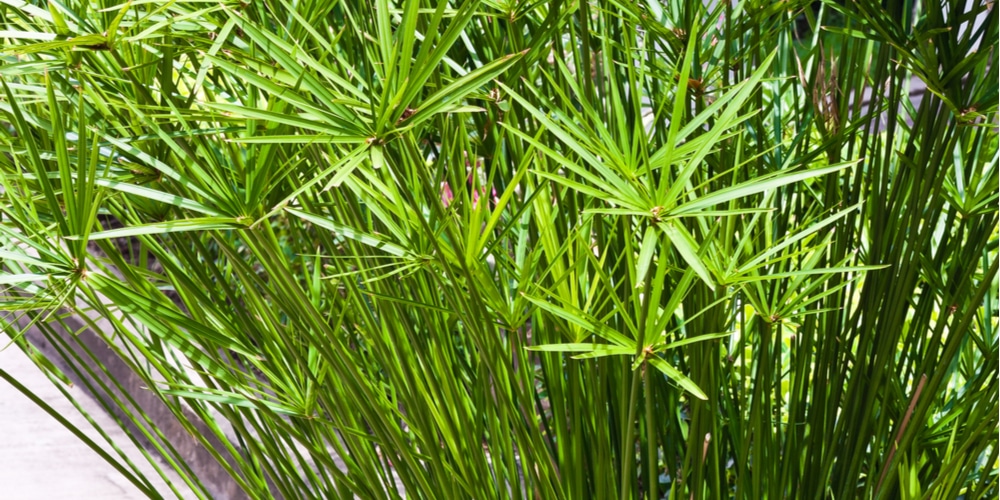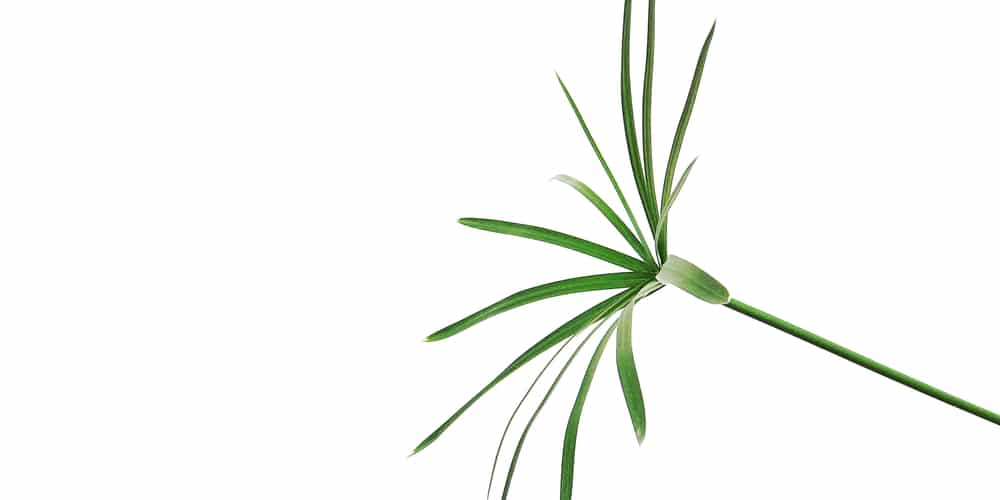Native to South Africa and Zimbabwe, King Tut grass is an ornamental grass that has become popular in the United States. Its long, feathery plumes make it a favorite for landscaping and centerpieces, and its deep green foliage is hardy enough to withstand both cold temperatures and hot summers.
Despite its regal name, King Tut grass is actually quite easy to care for. Prized for its low-maintenance nature, this grass requires little more than regular watering and occasional trimming to keep it looking its best.
Let’s take a closer look at the care requirements for King Tut grass, as well as some tips on how to maintain it.
| Botanical Name | Cyperus Papyrus |
| Common Name | King Tut |
| Plant Type | Evergreen / Perennial |
| Flower Color | Green, aromatic foliage |
| Size When Mature | 48-72 inches |
| Bloom Time | Mid to late summer |
| Sun Requirements | Full Sun, with Afternoon Shade |
| USDA Hardiness Zones | 10-11 |
| Soil PH Range | 6.0-8.5 |
| Soil Type | Acidic to alkaline, well-draining, wet soil |
| Water Needs | High |
| Native Area | Africa |
What You Need to Know About King Tut Grass
King Tut grass is a striking and hardy plant known for its vibrant blades of green and tall, lush stalks. Named after the famous Egyptian pharaoh, King Tut grass is a member of the Poaceae family.
It’s also known as Cyperus Papyrus and grows in clumps that reach up to four feet tall. Unlike other types of grass, King Tut grass doesn’t have rhizomes, making it easy to control and contain. Simply said, it is not invasive.
Each stem is topped with a plume of green or brown flowers that can be eight inches long, typically lasting from early summer through the fall. The flowers are followed by small, brown seeds that will self-sow if left on the plant. Moreover, the grass produces an extensive root system, making it ideal for use in erosion control.
Despite its striking appearance, King Tut grass is actually quite easy to grow and care for. It’s a low-maintenance plant that can thrive in various climates and soil types. Native to Africa, this plant loves water and thrives in humid environments.
When grown in ideal conditions, King Tut grass is a fast-growing plant that can reach its full height in just a few months. Once established, the grass needs to be watered about once per week, though you may need to increase the frequency of watering in hot climates or during dry seasons.
To keep King Tut grass from getting too tall and flopping, you’ll need to regularly trim it by cutting off all but one-third of its leaf blades.
How to Care for King Tut Grass
If you’re thinking about adding King Tut grass to your landscape, here’s everything you need to know about its care and maintenance and how you can grow a thriving King Tut grass.
Light
King Tut grass is a beautiful, fast-growing plant that thrives in full sun. However, it can also be grown in partial shade or even indoors as a houseplant.
The key to keeping this plant healthy is to provide it with plenty of light. King Tut grass prefers full sun, but it will also do well in partial shade. Make sure that you plant it in your yard that receives 6 hours of direct sun, with shade in the afternoon to protect it from the hot summer rays.
If you live in a climate with cool winters, you can protect your plants by planting them in an area that receives afternoon sun. This is particularly important in the first year of growth when the King Tut grass is particularly vulnerable to cold temperatures.
Water and Soil Needs
King Tut thrives in well-drained soil with a pH level of 6.0-8.5. If your soil is too acidic or alkaline, you can amend it with lime or sulfur. Moreover, adding organic matter to your soil, such as compost or manure, will help improve its drainage and fertility.
This plant thrives in wet and boggy conditions, and it is best to plant it in a spot with access to plenty of water.
When planting King Tut grass, keep the soil moist but not saturated. It’s essential to avoid letting the roots dry out so that your plants don’t go dormant. However, you should also prevent overwatering since this can lead to root rot or fungal diseases.
The best way to water your plants is to use a soaker hose or drip irrigation system to evenly distribute water to the roots. You can also water them by hand, careful not to get the leaves wet.
Be sure to check the soil before watering and only give your plants enough water to keep the soil moist.
Temperature Requirements
King Tut grass survives in USDA zones 10-11, withstanding temperatures as low as 35 degrees Fahrenheit. Once the temperature reaches 35 degrees, this plant will start to go dormant, and its growth will slow. It will then be considered an annual plant in colder climates.
Fertilizer
King Tut grass is a fast-growing plant that doesn’t require a lot of fertilizer. In fact, too much fertilizer can actually be harmful to the plant.
A light application of balanced organic fertilizer in the spring with a second application in late summer is all that’s needed to keep your plant healthy.
Common Diseases
King Tut grass is relatively resistant to disease and pests. However, it can be susceptible to fungal diseases, such as rust, if it’s not getting enough light or air circulation.
To prevent these diseases, make sure to plant your King Tut grass in an area with good air circulation and full sun. If you notice any signs of disease, remove the affected parts of the plant immediately.
King Tut Grass Propagation
King Tut grass is easily propagated from seed. Sow the seeds in the spring after all the danger of frost has passed. To improve germination rates, soak the seeds in water for 24 hours before planting.
Plant the seeds in well-drained soil and water regularly until they germinate. Once the plants have reached a height of six inches, you can thin them out so that they’re spaced 12 to 18 inches apart.
King tut grass: Final Thoughts
When it comes to caring for your King Tut Grass, it’s important to strike a balance between quality and quantity. Ideally, you should aim for regular, evenly-distributed waterings – any more or less than this can disrupt the health of your beautiful grass and leave you staring at dull, lifeless blades.
While this hardy grass can survive and thrive in almost all soil conditions, remember that this plant thrives in wet and boggy conditions. If you have soil that’s on the dry side, consider adding some compost to help keep it moist.
You may also like: King Palm Tree Growth and Care Guide


